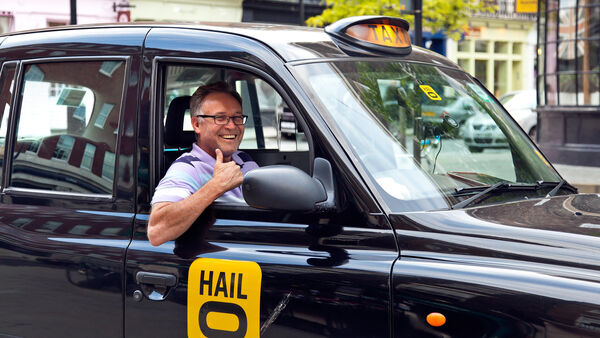Avoiding Taxi Scams in Europe

By Rick Steves
Many Americans are wired to assume that taxi drivers in other countries are up to no good. But I've also found that most drivers are honest. Sure, scams happen. But with the right knowledge and a watchful eye, you'll get where you want to go without being taken for a ride.
Be extra careful at airports and train stations. A taxi zipping you right to your hotel can be a relief after a long flight or train ride. But dishonest cabbies sometimes lurk at major transit points, ready to take advantage of travelers who are jet-lagged and travel-weary. To avoid problems, head for the official taxi stand and join the queue rather than flagging a taxi down — or consider public transport. Nearly every airport in Europe — even the tiny ones — has easy transit access to the closest city center.
Always choose a well-marked cab. It should have a big, prominent taxi-company logo and telephone number. Avoid using unmarked beaters with makeshift taxi lights on top.
In some cities, it's easy to flag down a cab; in any city, you can find cabs at a taxi stand. These stands are often listed as prominently as subway stations on city maps; look for the little Ts (or ask a local to direct you to the nearest one).
When you need a ride from a hotel or restaurant, you can have the staff call a taxi for you (or use a taxi-finding app to order one yourself). This can dramatically decrease your odds of getting ripped off, but be aware that in many places, the meter starts ticking from the time the call is received. Note that if you have an early morning flight to catch, it'll save you some stress (and cost nothing beyond the usual supplements) to have your hotelier book a cab for you the day before.
Establish a price or rough estimate up front. It's usually best to make sure the cabbie uses the taxi meter. But for certain standard trips (such as to or from the airport), set prices are common. Learn the going rate for getting to your destination by asking your hotelier or at any tourist info point. You can check your guidebook, TaxiFareFinder.com, or Ride.Guru for estimated taxi fares in larger cities (Ride Guru also compares taxi rates with services like Uber). Most European taxis are reliable and cheap. Groups — or even just two people — can often save time and money over public transit by sharing a ride.
Sometimes tourists wrongly accuse their cabbies of taking the long way around or adding unfair extras. But what can seem like a circuitous route may still be the shortest, given pedestrianized zones and one-way streets. And many supplements are legit, based on the time of day (nights, early mornings, and weekends), amount of baggage, extra people, airport taxes, port fees, and so on.
In cities such as London, Paris, and Barcelona, meters are tamper-proof. That said, even cabbies with honest meters have ways of overcharging tourists. One common trick is for cabbies to select the pricier "night and weekend" rate on their meter during a weekday. An explanation of the different meter rates should be posted somewhere in the cab, often in English; if you're confused about the tariff, ask your cabbie to explain. If you suspect foul play, following the route on your map or conspicuously writing down the cabbie's license information can shame a cad into being honest.
At airports and train stations, look for the official taxi queue, where you'll wait in line to be assigned a taxi. Be wary of unofficial helpers who usher tourists out of line to a separate taxi area — this is often a scam that ends with your credit card number being stolen.
Pay with small bills. Using small bills minimizes your chance of getting ripped off. If you only have a large bill, state the denomination out loud as you hand it to the cabbie. They can be experts at dropping your €50 note and then showing you a €20. Count your change. If, for whatever reason, I'm charged a ridiculous price for a ride, I put a reasonable sum on the seat and say good-bye. Don't be intimidated by a furious cabbie.

